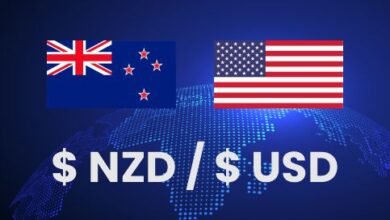- EUR/USD attracts some sellers during the Asian session, though it lacks follow-through.
- The USD stalls the overnight pullback from a multi-week top and weighs on the major.
- Traders now look forward to the US PCE Price Index for some meaningful impetus.
The EUR/USD pair struggles to capitalize on the previous day’s goodish bounce from over a three-week low, around the 1.0730 area, and edges lower during the Asian session on Friday. Spot prices currently trade with mild negative bias below the 1.0800 mark, though the downtick lacks bearish conviction as investors await the release of the US Personal Consumption Expenditure (PCE) Price Index.
The crucial inflation data will be looked for cues about the Federal Reserve’s (Fed) future rate-cut path, which, in turn, will play a key role in influencing the near-term US Dollar (USD) price dynamics and provide a fresh impetus to the EUR/USD pair. In the meantime, some repositioning trade assists the USD to stall the previous day’s retracement slide from a multi-week high and acts as a headwind for spot prices. Adding to this worries about the potential economic fallout from US President Donald Trump’s tariffs and the risk-off mood lend some support to the safe-haven Greenback.
The shared currency, on the other hand, is weighed down by the risk of a further escalation of trade tensions between the US and the European Union (EU). Trump on Wednesday unveiled a 25% tariff on imported cars and light trucks starting next week. This comes on top of the recent 25% flat import tax on all steel and aluminum, and the uncertainty over Trump’s reciprocal tariffs set to take effect from April 2. Meanwhile, the EU has said it will retaliate by imposing tariffs on imports from the US. This raises the risk of an EU-US trade war and further exerts pressure on the EUR/USD pair.
Any meaningful USD appreciation, however, seems elusive in the wake of worries that US President Donald Trump’s aggressive trade policies will dent US growth and force the Fed to resume its rate-cutting cycle soon. In fact, the markets are now pricing in the possibility that the US central bank would lower borrowing costs at the June, July, and October policy meetings. This should keep the USD bulls on the defensive and help limit the downside for the EUR/USD pair. Nevertheless, spot prices remain on track to end in the red for the second successive week.





